Science
Frogs and Toads Together: Why do Amphibians Group Up?April 11, 2025

8
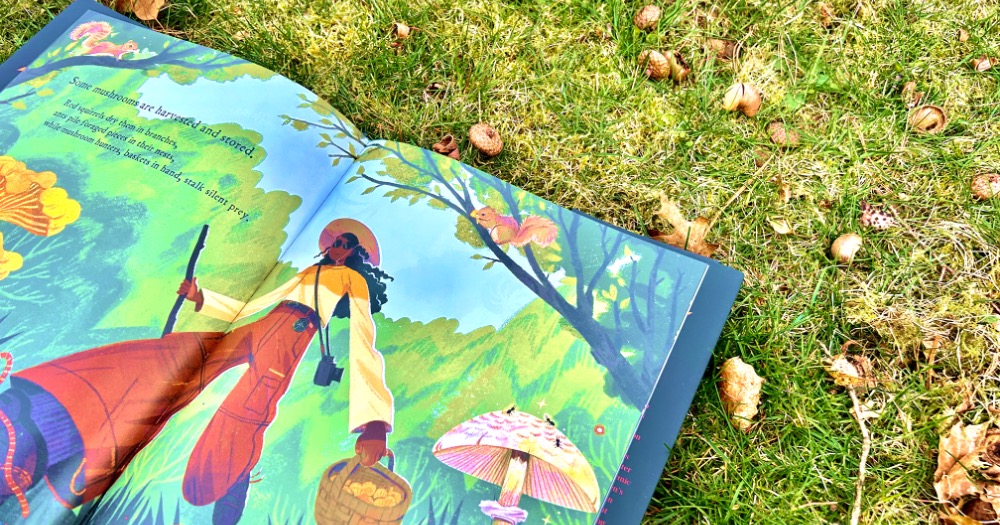
If you’re reading this, you’re probably already convinced that teaching science in elementary school is important. But maybe you feel like there’s not enough time in your schedule thanks to the demands for more math, reading, and writing instruction.
Subject integration could be your new best friend! I’m talking about covering science concepts by teaching with books during reading time. How will this help you and your students? That’s what this article is all about. Read on to find out more!
Affiliate disclosure: As an Amazon Associate, I may earn commissions from qualifying purchases from Amazon.com. This is at no extra cost to you. If you’d like to learn more, check out my disclaimers page.
Covering science concepts by teaching with books can benefit you and your students in many ways. Let’s start with you as the teacher. Why use picture books in the classroom to teach science? A very convincing argument is that it can save you time. If you select read-aloud picture books that teach your science standards as well as your reading standards, then you’re covering two subjects at once, saving you time in your schedule.
Teaching with books can also help you feel more confident in your science knowledge. Sometimes you’re learning science concepts alongside your students or maybe you know the basics and you’re uncovering something new about a topic.
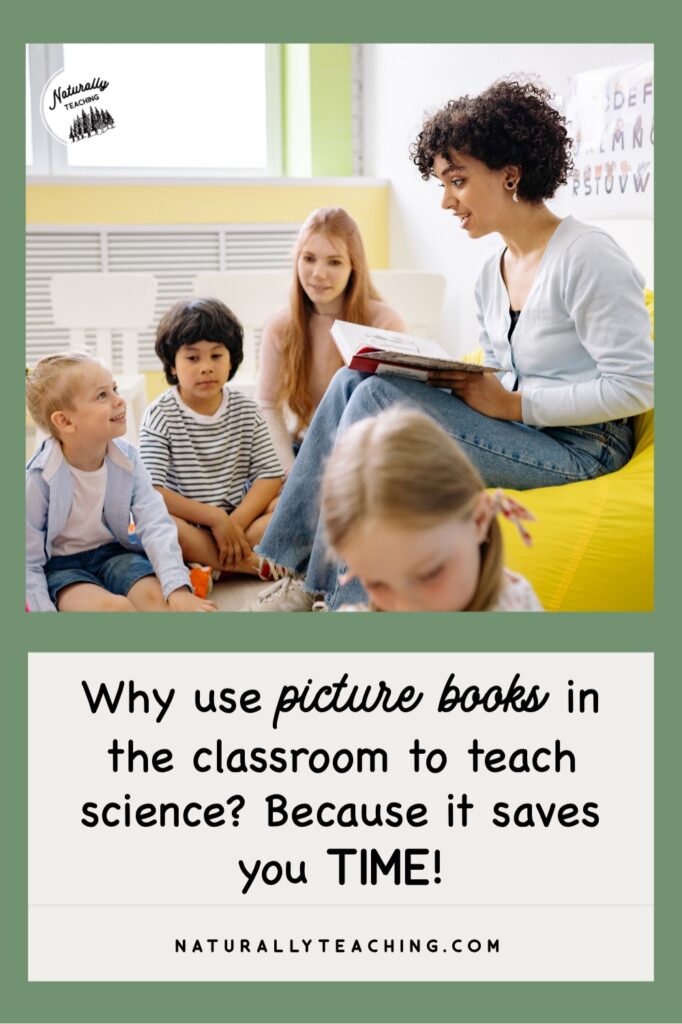
Picture books can be a great way to discover new information and boost your confidence in your knowledge about a science topic. According to Stewart and Chesley, “[m]any elementary teachers do not have a strong science background. Some even report being intimidated by their school’s science curriculum and feel ill equipped to teach basic science concepts. Building science lessons around children’s books enables many elementary educators to approach science instruction with greater confidence.” (Stewart & Chesley, 2014, p.4).
Picture books are also a great way to help you “hook” your students into science learning. “In many ways picture books allow teachers to energize the science program and demonstrate the logical connections that exist between classroom learning and the natural world outside the classroom.” (Pringle, 2005, p.13). Getting your students excited to learn science can sometimes be a challenge, especially if they’ve had negative science experiences in the past. Finding great picture books to amp them up will make your job as a teacher that much easier!
So what are some ways that you can begin integrating science and literacy in your classroom teachings? Start by gathering a few read-aloud books that cover one of your science concepts or a snippet of one of your science standards.
After selecting your potential science picture books, read through the books to see if they cover any of your English Language Arts standards too. You could search the book for rhyming words, rhythm, retelling opportunities, the role of illustrations in helping the reader understand the text, and more. If you’re having a hard time working non-fiction reading into your studies then integrating science and literacy is a super easy way to ensure you’re hitting that standard.
You can also use the technique of teaching with books to develop your science during writing time. If you use your science read-aloud books as the basis for an opinion writing, a how-to writing, an informational writing, and more, it can give you insight into your students’ understanding of the new information as well as develop their technical writing skills. There’s also the bonus of knowing that all of your students have a common experience to draw upon for their assigned writing.
You can also save yourself time by checking out my picture book companions in my Teachers Pay Teachers store. These companions are mini units designed by integrating science and literacy to meet curricular goals. There are title specific companions as well topic-based units, all with pre-made activities to work toward ELA Common Core State Standards and Next Generation Science Standards.
To reiterate the benefit to integrating science and literacy, NSTA points out that “[r]esearch by Marrow, Presley, Smith, and Smith (1997) on using children’s literature and literacy instruction in the science program indicated gains in science as well as literacy…They also found an improvement in students’ attitudes toward the study of science.” (NSTA, 2010, p.2). Teaching with books can help your students excel in both science and reading, all of which can be accomplished by being intentional about integrating science and literacy.
We’ve talked about ways teaching with books can help you as a teacher, but what about your students? What will your students get out of reading science picture books and how will that help them develop their scientific skills?
My favorite way that teaching with books benefits students is their non-threatening method of introducing complex scientific concepts. Many science textbooks come at kids with really big words and technical writing which overwhelms them and makes them resistant to learning science from the get-go. Science picture books have appealing illustrations and words meant for young readers, bringing the concepts to a level that appeals to more of your students.
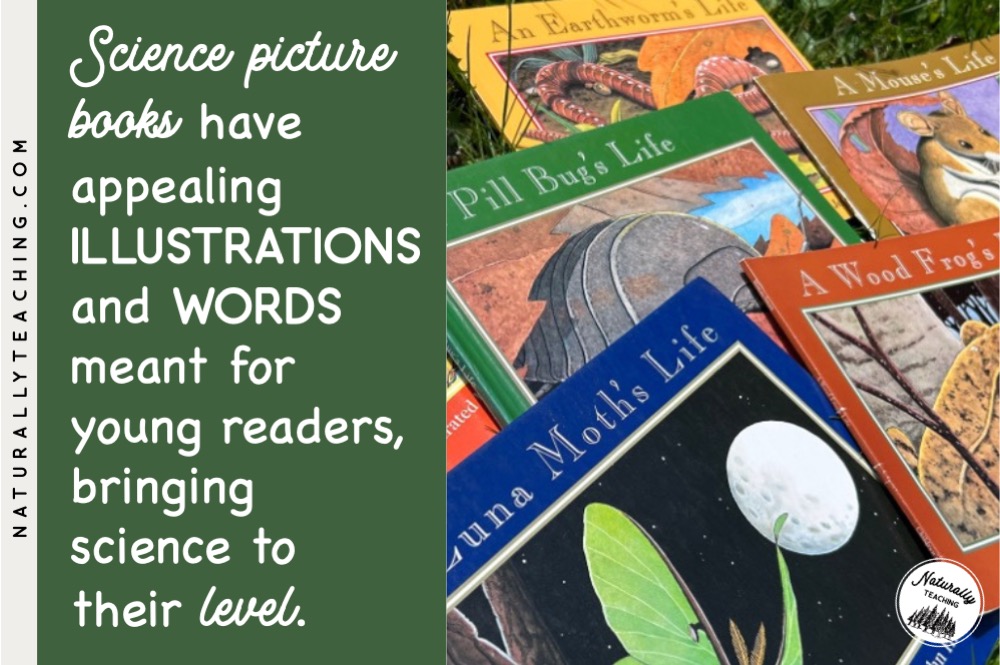
They can also make abstract concepts more concrete, especially for early childhood learners. Dr. Mirta Ramirez-Espinola shares that “[s]cience concepts can be abstract and visual aids like illustrations or diagrams in books can help students bridge gaps between the abstract and concrete.” (Ramirez-Espinola, 2023).
Science picture books also give your students a chance to analyze the role of illustrations in telling a story or in presenting information. Since picture books rely so heavily on illustrations to help carry the story or information presented, they are integral in the understanding of the message being shared.
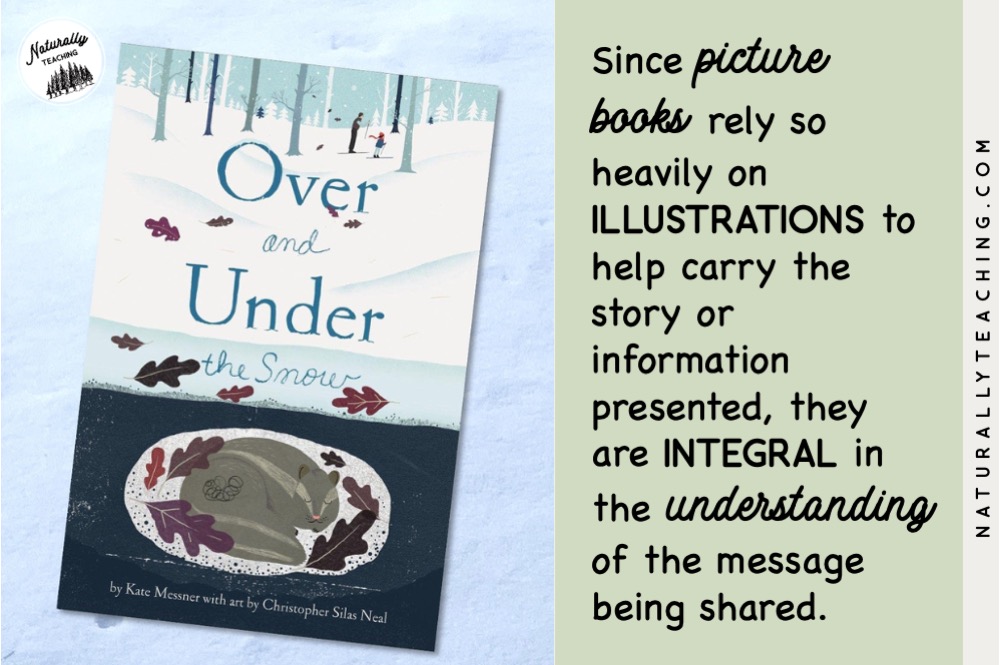
Over and Under the Snow by Kate Messner, illustrated by Christopher Silas Neal does this really well. Messner’s text gives a short description of where animals can be found surviving the winter while Neal’s illustrations show the reader exactly what it would look like in nature. The book wouldn’t be the same if it was missing the text or the illustrations; both are needed to help children really grasp the scientific content.
Teaching with books also gives your students experiences that they wouldn’t have otherwise. For example, The Magic School Bus series allows students to go inside the human body, dive down to the bottom of the ocean, be erupted out of a volcano, and more in an effort to provide them an engaging way of learning about the world around them. It’s like a field trip that you get to attend while remaining safely in your classroom!
So what are picture books? The simplest definition for picture books are books whose pages are mostly filled with illustrations or pictures. In picture books, the illustrations are just as important, sometimes even more important, than the storyline or text. There are some picture books written for adults but most picture books are written for children.
Sometimes people think that graphic novels are picture books for older kids, but they are actually two different genres. Picture books differ from graphic novels by their length, the intended audience, and the topics covered. Picture books are often full page spreads with illustrations typically consuming the entire page or two pages connected by the spine of the book. Graphic novels, however, tend to have a few full-page illustrations but are mostly filled with panels that show multiple moments in time.
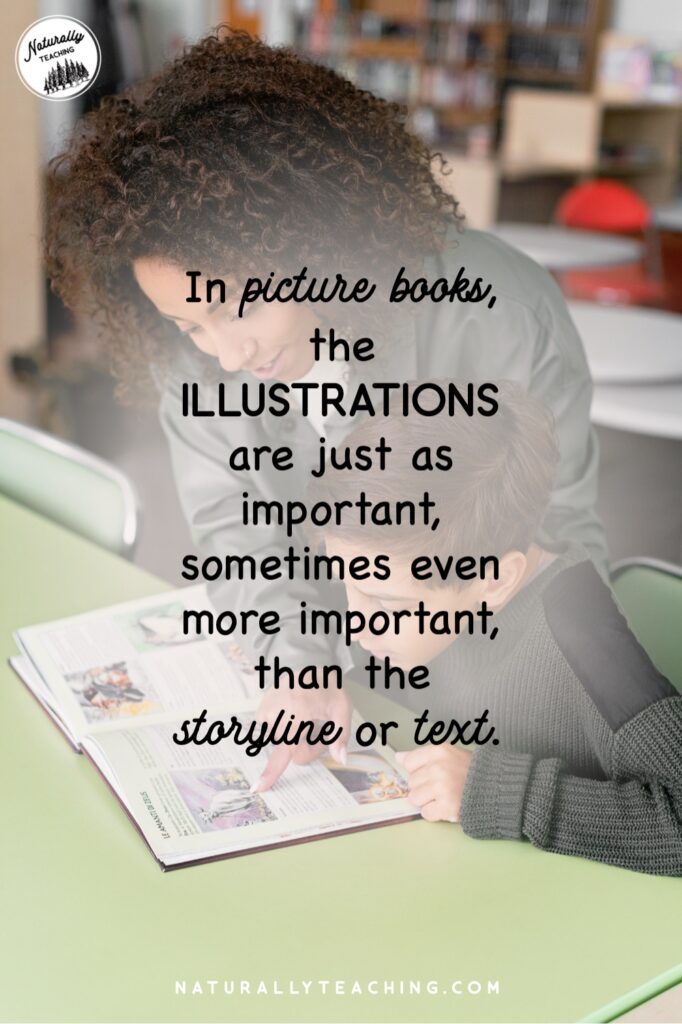
There has recently been a movement amongst children’s authors and former educators to write picture books that help teach scientific concepts in age-appropriate and engaging ways. NSTA agrees that “[t]he wide array of high-quality children’s literature available today can help you to model reading comprehension strategies while teaching science content in a meaningful context” (NSTA, 2010, p.2); a methodology that wasn’t as easy to implement prior to this intentional writing movement.
On that note, let’s check out the different types of picture books about science that you can use in your elementary classroom.
There are different categories of children’s picture books, but NSTA (2010) suggests using these four categories of picture books to help teach science:
According to NSTA, storybook picture books are focused on a character or characters who work to solve a problem or conflict. Storybook picture books can be used to help you teach science in your elementary classroom but only after checking them for scientific inaccuracies.
Since the main goal of storybooks is to entertain the reader, some of them with scientific storylines hold misconceptions or inaccuracies in their text and/or illustrations. NSTA suggests that “[s]tory books with scientific errors should not be used in the introduction of a topic, but may be used better in the lesson to identify and correct the misconceptions” (NSTA, 2010, p.4)
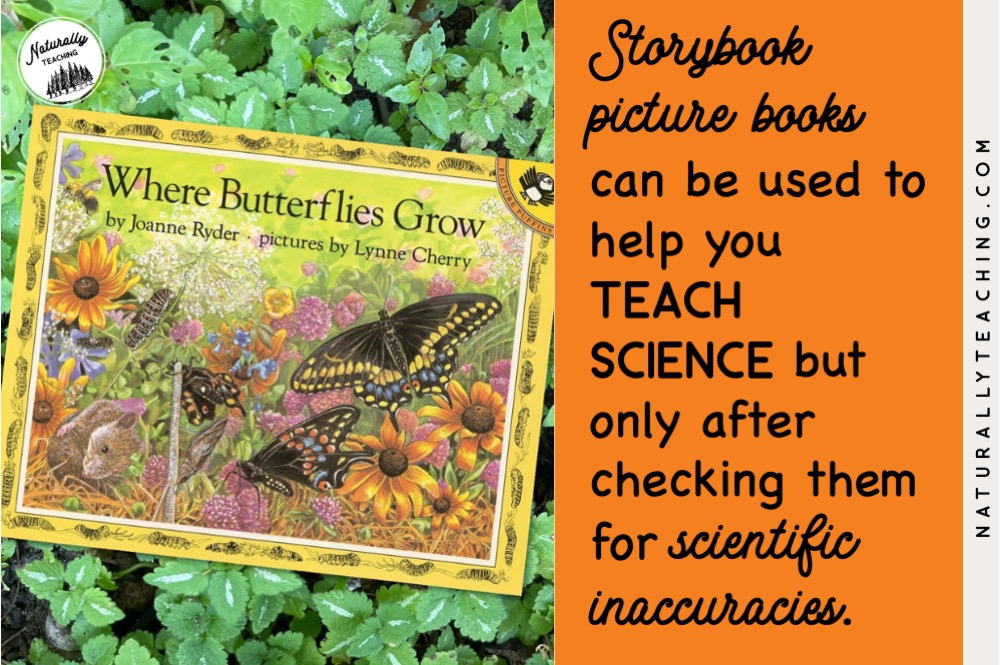
A very common example of this is The Very Hungry Caterpillar by Eric Carle. At first glance it seems like a simple book to teach the life cycle of a butterfly, but then Carle refers to the pupa stage as a cocoon instead of a chrysalis. While this terminology is true for a few species of butterflies, it’s definitely an exception and not the general rule.
You could read The Very Hungry Caterpillar book for butterfly life cycles and say “chrysalis” when you come across the word “cocoon”, or you could find a more accurate life cycle book like Where Butterflies Grow by Joanne Ryder.
NSTA introduces nonnarrarive information books as informative texts based on the facts of a topic, attributes of the topic, or events that typically occur around said topic; essentially your traditional nonfiction picture books.
Since these books are wholly factual, you don’t need to worry as much about whether or not they are scientifically accurate. However, children tend to be less interested in this genre than any of the other storybook types.
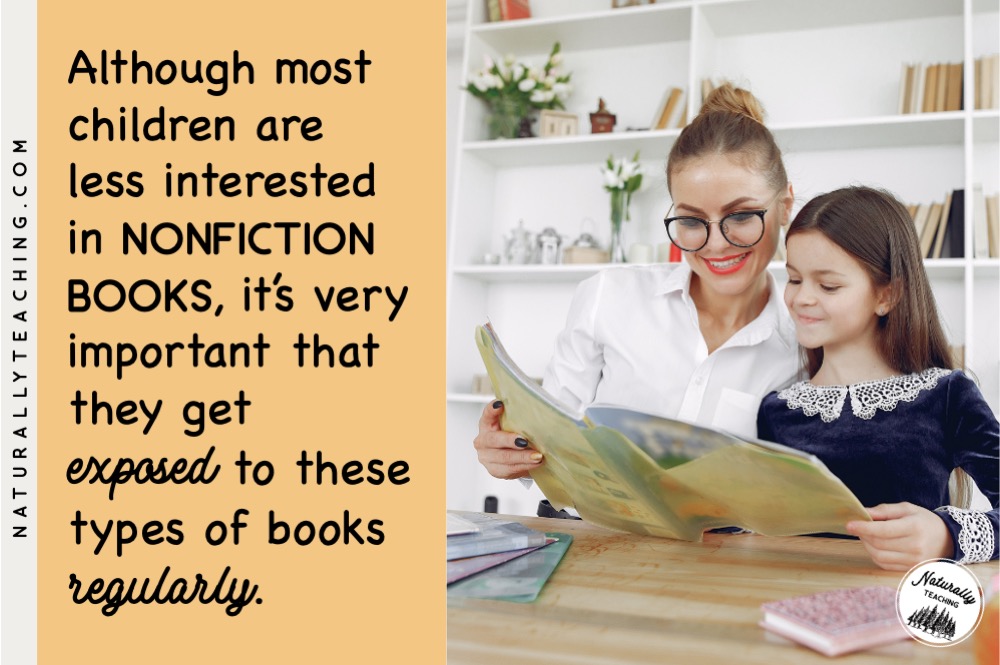
Although most children are less interested in nonnarrative information books, it’s very important that they get exposed to these types of books regularly. As the writers at NSTA so expertly put it, “[w]e are immersed in informational text every day, and we must be able to comprehend it to be successful in school, at work, and in society.”
To get your students interested in nonnarrative information books, consider reading books about high interest topics such as carnivorous plants, owls, or volcanoes. When I was working at the nature center, the teachers I worked with found that their students were interested in reading field guides thanks to the bird feeders they put up outside the windows; a simple yet effective way to incorporate nonnarrative information books into the classroom.
NSTA describes narrative information books as the hybrid between storybooks and nonnarrative information books. Essentially they are factual in nature but told in a story format.
This hybridity makes them more engaging and attractive to students of all interest levels. It’s also the sweet spot for integrating science and literacy in your elementary classroom.
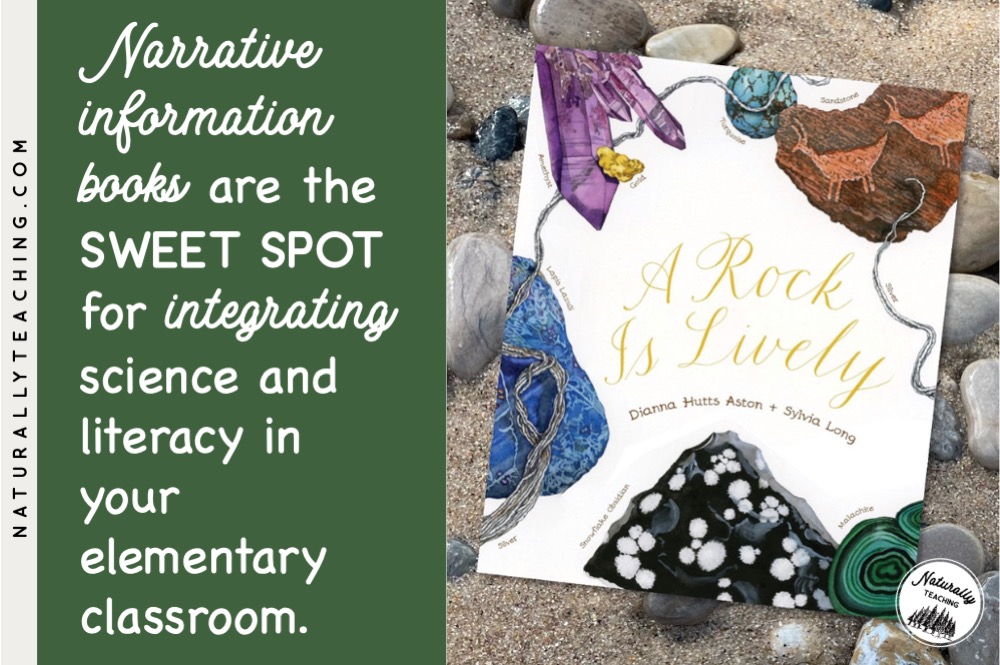
Some examples of these books include A Wood Frog’s Life by John Himmelman and A Rock is Lively by Diana Hutts Aston. These books present science concepts within engaging storylines. This category of picture books is my all-time favorite for teaching science to students (it’s also my all-time favorite in general!).
NSTA describes dual-purpose books as having a storyline that contains little scientific information. Instead, the science can be found in the diagrams and insets on the pages.
These books make great read-alouds for the introduction and exploration phases of your science unit. You could read the storyline to your class as you’re introducing the new topic and then save the insets and diagrams for repeated reading as you explore the concept.
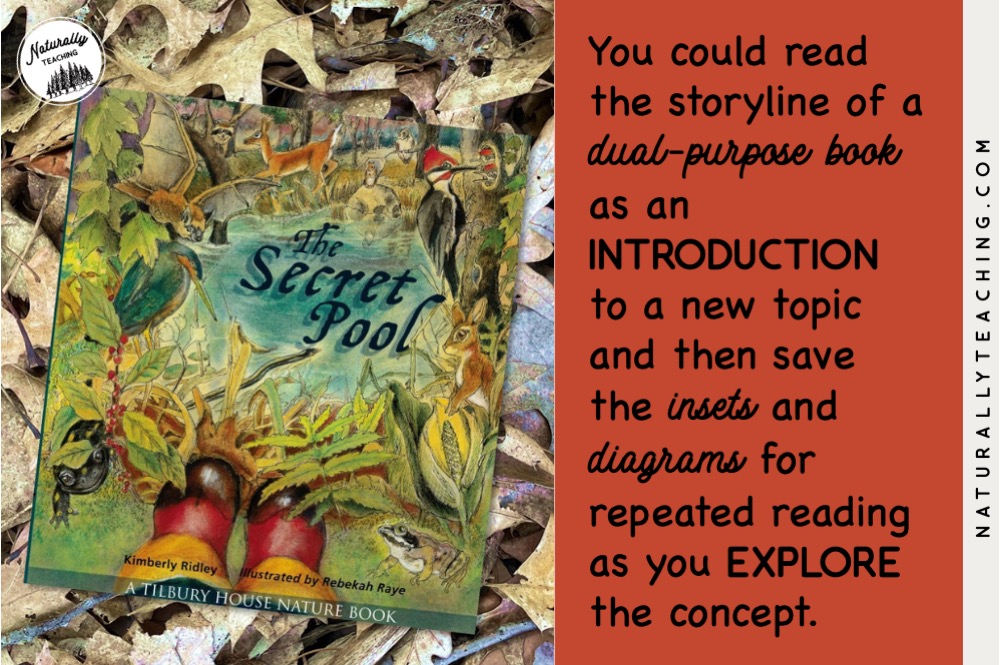
One of my favorite dual-purpose books is The Secret Pool by Kimberly Ridley, a picture book about vernal pools. Ridley wrote a lovely storyline that has rhythm and rhyme which provides a magical tone to this unknown ecosystem, but the insets on each page provide more concrete information and facts about the properties and animals found in vernal pools.
After all this information about the benefits of teaching with books, you may be wondering how to pick quality children’s books on science.
Shameless plug alert…keep checking this website! I LOVE children’s books on science and will publish lists of books that help teach different science topics throughout the school year. I do all the research for you, write up summaries, and even connect the books to Next Generation Science Standards!
But, if you’d rather get in the trenches yourself, check out the following suggestions on how to pick quality children’s books on science.
If you’re taking on the research yourself, the best way to select children’s books on science is to have someone with a scientific background read through a potential book for you so that you know that it’s free of misconceptions.
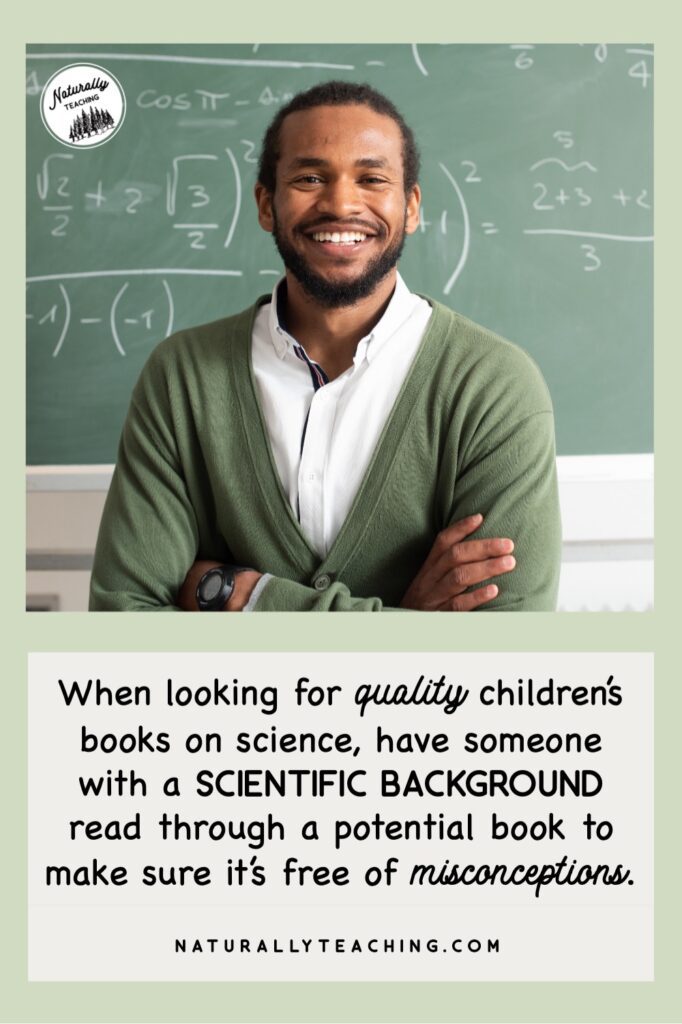
If you find that a book that you LOVE has misconceptions, you could still use it if you frame it correctly. Consider reading it during the exploration phase of your science unit. “Scientifically inaccurate children’s books can be helpful when students analyze inaccurate text or pictures after they have gained understanding of the correct scientific concepts through inquiry experiences” (NSTA, 2010, p.3).
After your students have some background in your science unit, tell them that the book you are about to read has misinformation in it and they are going to identify where the book went wrong; it’ll make them feel like little detectives but it will also help them express their understanding of the new content, leading to deeper understanding.
Deciding what you want your students to get out of the book will also help you decide which children’s books on science you want to read to your students. Do you want them to get a bird’s eye view about the topic or do you want to focus in on a small aspect of the topic? Do you want them to be presented facts about an animal or do you want them to see the animal’s behavior through a storyline?
Identifying the goals you have for the piece of literature will help you narrow your picture book search in order to find the perfect piece to accompany your science unit.
As a teacher you’re limited on time, so try to find books that aren’t “fluffy” or cutesy but are full of scientific information that will help you move forward in your students’ scientific understanding.
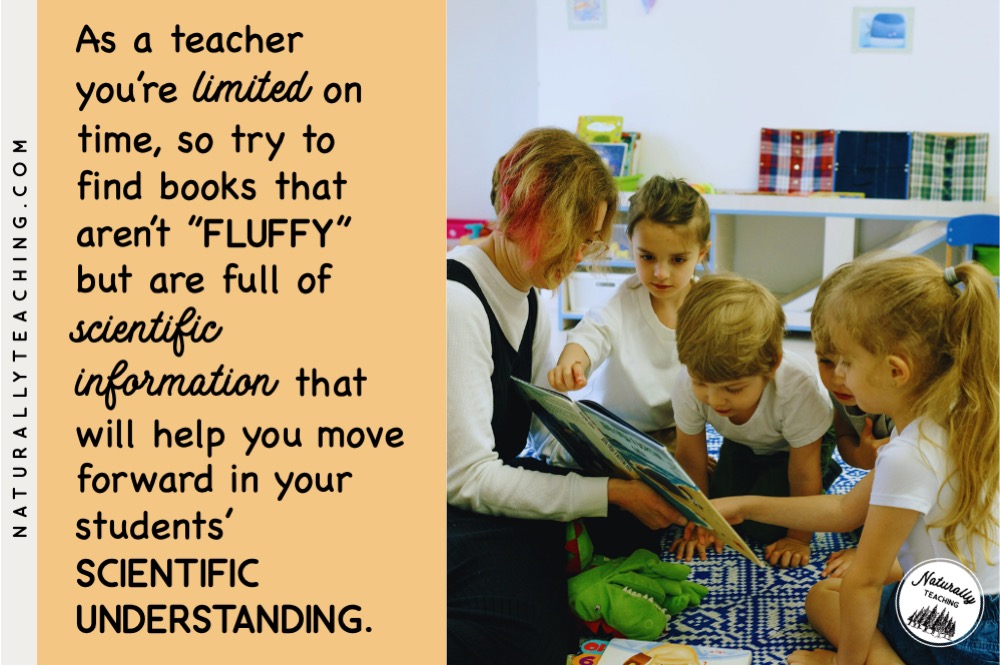
Say you’re starting a unit with 1st graders about why the moon changes shape. We all love the book Goodnight Moon by Margaret Wise Brown, but even though it’s super cute, it wouldn’t be a great option to teach moon phases.
Papa, Please Get the Moon for Me by Eric Carle would be a step up from Goodnight Moon, but is still a lot of fluff and not necessarily substantial. However, if you were to read Moon! Earth’s Best Friend by Stacy McAnulty, you’ll still get cuteness but you’ll also get a plethora of information that will help your young readers get a scientifically accurate introduction to moon phases.
A lot of your students will gravitate toward fiction books whereas some will prefer nonfiction books. Both genres of picture books are beneficial for all of your students and can make for a well-rounded introduction and exploration of information about your scientific concepts. If you’re intentional about selecting both fiction and nonfiction books to introduce and explore science topics then you’ll ensure that you’re having robust reading studies as well.
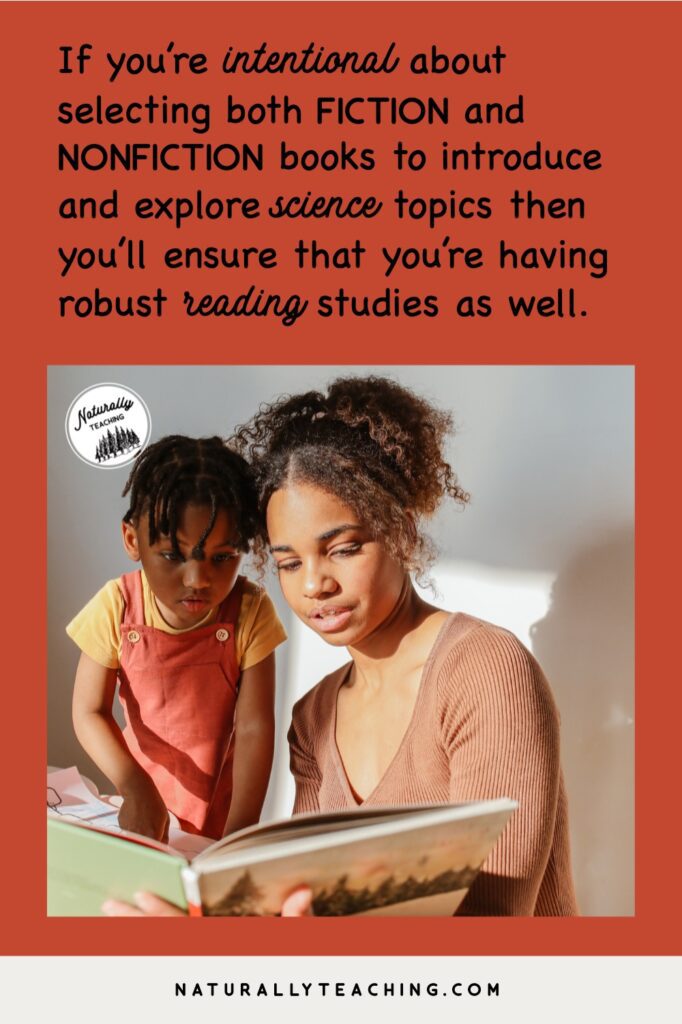
NSTA points out that “[m]ore often than other books, fiction and nonfiction picture books stimulate students on both the emotional and intellectual level…[F]iction and nonfiction picture books [also] tend to focus on fewer topics and give more in-depth coverage of the concepts” (NSTA, 2010, p.1-2). Being intentional with your book selection and including both fiction and nonfiction read-aloud texts can help your students improve in their science and reading skills.
If you’re looking for more guidelines for picking out quality children’s books on science, check out this article from the NSTA, A Guide to Choosing and Using the Best Books for Children.
Hopefully you’ve discovered some great information to support teaching with books, especially for enhancing your science studies. Afterall, integrating science and literacy has shown to increase student performance, improve students’ attitudes toward science education, save you time in your schedule, and more.
Be an educational pioneer and take the road less traveled – I’ve seen it make all the difference! If you want to begin this journey, but you’re not sure how, reach out to me at victoria at naturallyteaching.com with your questions. I’d be happy to help you get started! Or, if you’re ready to go, but want to start with a little guidance, check out my picture book companions which will lead you into the world of teaching with books with little to no extra prep.
Works cited
NSTA. (2010). Why Read Picture Books in Science Class? Retrieved from https://uk.sagepub.com/sites/default/files/upm-assets/50675_book_item_50675.pdf
Pringle, R. M., & Lamme, L. L. (2005). Using Picture Storybooks to Support Young Children’s Science Learning. Reading Horizons: A Journal of Literacy and Language Arts, 46 (1). Retrieved from https://scholarworks.wmich.edu/reading_horizons/vol46/iss1/2
Ramirez-Espinola, Dr. M. (2023, June 6). Teaching Tuesday: 3 Benefits of Using Picture Books for Science. Retrieved from https://www.gcu.edu/blog/teaching-school-administration/teaching-tuesday-benefits-using-picture-books-science
Stewart, M. & Chesley, N. (2014). Perfect Pairs: Using Fiction & Nonfiction Picture Books to Teach Life Science, K-2. Retrieved from: https://www.google.com/books/edition/Perfect_Pairs/RURhBAAAQBAJ?hl=en&gbpv=1
Affiliate Disclosure
I only endorse things that I’ve personally used, come highly recommended by trusted peers, or I’ve done extensive research on. As an Amazon Associate, I may earn commissions from qualifying purchases from Amazon.com. This is at no extra cost to you, the commission is covered by the company.
I am recommending products that I think will be genuinely helpful and useful, and not because of the small commissions that I receive. Please only purchase items if you believe that they will help you achieve your educational goals. If you’d like to learn more, check out my disclaimers page.
Do you have any amazing ideas for teaching with books in your science classroom? Describe them in the comments section to inspire a fellow elementary teacher to take action!
Check out this podcast episode for unique ways to teach with books!
Looking for other reads about books? Check out my blog category, “Picture Books” for lists, book specific activities, and more.
8 thoughts on “Teaching with Books: How to Integrate Science and Literacy for Elementary Classrooms”